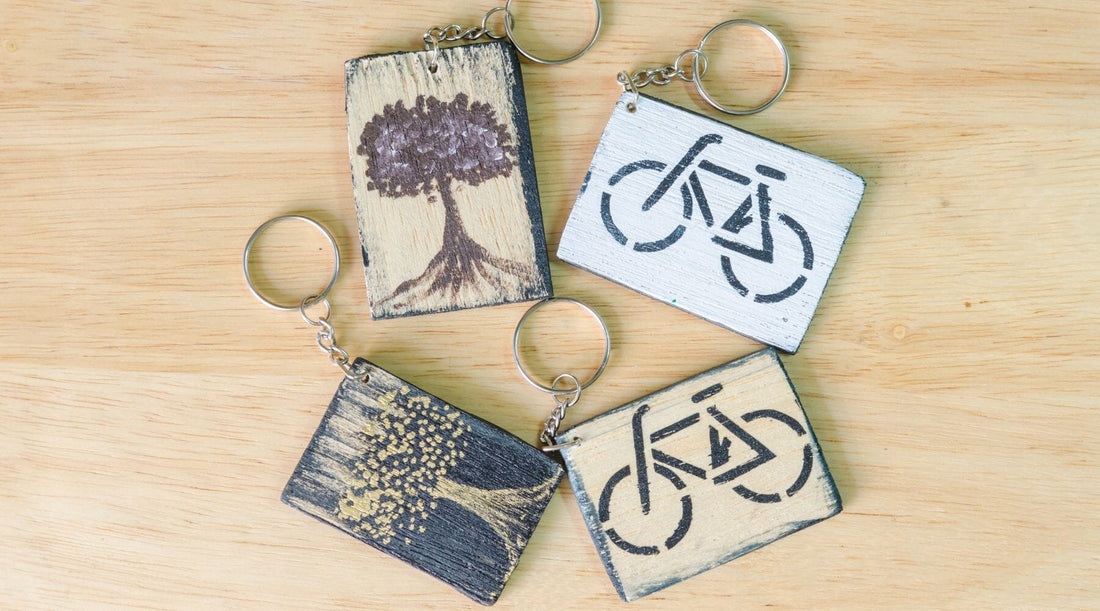How Does a Laser Engraver Work on Wood?

Laser engraving is a fantastic and practical technique, perfect for creating permanent marks on a variety of materials, such as fabrics, acrylics, wood, natural stone, metals, and more. The possibilities are truly endless – from engraving company logos to crafting personalized gifts, a laser machine can bring your ideas to life in remarkable ways.
Wood, in particular, has captured the hearts of many due to its versatility and wide availability. Despite the slight challenges it may present, working with wood becomes a breeze with a laser machine by your side. Whether you're dealing with soft, hard, or painted wood, the laser engraver effortlessly crafts intricate designs for handicrafts, souvenirs, plates, furniture accessories, toys, and countless other applications. So, let your imagination run wild, and let the laser engraver work its magic on this timeless and cherished material!
Unlocking the Magic: How Laser Engraving Transforms Wood
Laser engraving on wood follows a similar process to engraving on other materials, where the laser beam heats and evaporates the surface. The result is a flawlessly smooth and clean carving, unmatched by any other woodworking equipment. However, there's a key distinction in laser engraving on wood – it often involves a sublimation process.
During this process, the laser beam transforms the material directly from solid to gas through combustion. Occasionally, a bit of normal smoke may be produced in the processing area while laser engraving on wood.
Wood being a natural element comes with inherent imperfections that can pose challenges during carving. Factors like wood density and resin content must also be taken into account when choosing the appropriate wood for engraving.
Laser engraving on wood offers boundless creative possibilities, transforming this natural material into exquisite works of art that captivate the imagination. With precision and finesse, laser technology elevates woodworking to new heights, allowing artisans to leave their mark on this timeless medium.
Unleashing the Artistry: Laser Engraving on Wood - Tips and Techniques
As you gain experience and fine-tune the power and speed settings of your laser woodworking machine for different types of wood, achieving a flawless engraving becomes second nature. Wood, being a wonderfully malleable material, not only lends itself easily to laser engraving and cutting but also accommodates an array of varieties, shapes, and sizes.
For optimal results, precise lens focusing is crucial. While brown is the most common color for wood laser engravings, you can easily obtain white engravings by adjusting the laser to low power and high speed, deviating from the typical brown tone.
On the other hand, if you desire to engrave on dark wood, a simple technique involves setting the beam slightly out of focus (between 0.5 and 2 mm). This wider trace and lower power density consistently produce exquisitely elegant results, turning each engraving into a true "work of art" meticulously etched onto the wood.
The interplay between your wood laser engraver settings and the type of wood you use plays a pivotal role in shaping the outcome of your projects. As we delve deeper, we'll explore other essential factors to consider when embarking on the enchanting journey of laser engraving on wood.
Selecting the Perfect Wood for Laser Engraving: Essential Considerations
Picking the right wood is a crucial aspect of laser engraving, and there are several factors to bear in mind to ensure flawless results. Here are some key points to consider:
Softwoods vs. Hardwoods:
Different woods have distinct properties. Softwoods like red cedar, western red cedar, southern ponderosa pine, and balsa respond well to lower laser power, allowing for quicker processing and sharper engravings. In contrast, high-density hardwoods like Brazilian ebony and snakewood require more laser power for cutting and engraving, resulting in darker markings. Your choice of wood will significantly influence the final appearance of your engravings.
Compatibility with Lasers:
Fortunately, most lasers can effectively engrave a wide range of wood types, including plywood, particle board, cork, teak, solid wood, cherry, maple, and oak. These versatile machines can handle materials with thicknesses of up to 20 mm, giving you ample flexibility for your projects.
Resin Content:
Keep an eye on the resin content of the wood, as it impacts the color of the laser markings. Lower resin content leads to lighter marks with minimal burns, while higher resin content can cause the laser to penetrate deeper, resulting in a more profound burn. Cherry and alder are examples of woods with higher resin content, both excellent choices for engraving, but cherry wood may exhibit more streaking, which might be a consideration for specific designs.
By carefully selecting the most suitable wood for your laser engraving endeavors, you can elevate your creations to a whole new level of artistry. The seamless fusion of laser precision with the natural beauty of wood will undoubtedly leave a lasting impression on your projects.
Conclusion
Laser engraving on wood is a captivating marriage of cutting-edge technology and artistic finesse, breathing new life into woodwork with unrivaled precision and intricacy. By delving into the science behind the process, understanding the step-by-step journey of engraving, and embracing the numerous advantages it offers, woodworkers can unlock the full potential of laser engraving to craft exquisite masterpieces. Whether you're a hobbyist exploring your creative passions or a seasoned professional in the world of woodworking, the enchantment of a laser engraver on wood knows no bounds, empowering you to explore boundless artistic possibilities and leaving behind timeless, awe-inspiring works of art that will undoubtedly stand the test of time.

